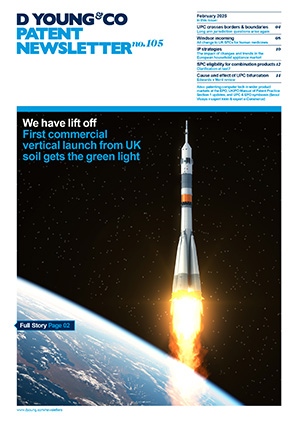ESA’s innovative “space bricks”: paving the way for lunar construction
The European Space Agency (ESA) has embarked on an innovative project to develop 3D-printed “space bricks” from lunar regolith, which could revolutionise construction on the Moon. This initiative, involving 3D printing and LEGO-inspired modularity, not only advances the field of space engineering but also carries significant patent implications.
The concept: building with lunar resources
At the core of the ESA’s space brick project is the concept of in-situ resource utilisation (ISRU). The idea is elegantly simple yet profound in its implications. Instead of transporting building materials from Earth to the Moon, a process that would be enormously expensive and logistically challenging, future lunar bases could be constructed using materials readily available on the Moon’s surface.
The lunar surface is covered with a layer of rock and mineral fragments known as regolith. This material, formed over billions of years by meteorite impacts and other geological processes, could potentially serve as a primary building material for lunar structures. However, the scarcity of actual lunar regolith on Earth has posed a significant challenge for ESA scientists looking to test this concept.
Innovative solution: meteorite-based lunar regolith simulant
To overcome the lack of genuine lunar material ESA scientists devised an ingenious solution. They created a lunar regolith simulant by grinding up a 4.5-billion-year-old meteorite. This approach allowed them to closely mimic the properties of actual lunar regolith, providing a realistic material for their experiments.
The use of meteorite dust as a regolith simulant is innovative in itself. It demonstrates the creative thinking necessary in space research, where scientists must often find inventive ways to replicate extraterrestrial conditions on Earth. Such techniques could potentially themselves be patented.
3D printing technology: from dust to bricksgmag
With their lunar regolith simulant in hand, ESA scientists employed another cutting-edge technology: 3D printing. They used the meteorite-based mixture to 3D print LEGO-style bricks, showcasing the potential for additive manufacturing techniques in lunar construction.
The choice of a brick design similar to LEGO is both practical and inspired. Like their plastic counterparts, these space bricks are designed to interlock, allowing for modular construction. This provides flexibility in design and the ability to easily modify structures, a crucial advantage in the uncertain and challenging lunar environment.
The resulting space bricks, while similar in form to LEGO bricks, have their own unique characteristics. They are rougher in texture and come in a single “space grey” colour, reflecting their composition and manufacturing process. These properties are integral to understanding how structures built with these bricks would behave in the lunar environment.
Testing and experimentation
The modular nature of the space bricks allowed ESA engineers to conduct extensive testing and experimentation. ESA Science Officer Aidan Cowley said, “Nobody has built a structure on the Moon, so it was great to have the flexibility to try out all kinds of designs and building techniques with our space bricks.”
This phase involved testing structural designs, assessing the bricks’ strength and durability, and exploring different construction techniques. The data gathered from these experiments will be invaluable in designing actual lunar habitats and other structures.
The ability to rapidly prototype and test different designs using these bricks represents a significant advantage. It allows researchers to identify potential issues and optimise designs before committing to full-scale construction, potentially saving considerable time and resources in future lunar missions.
Intellectual property and patent implications
The development of ESA’s space bricks also opens up a new frontier in intellectual property. This novel approach to lunar construction materials and methods presents several potential areas for patent protection:
- Material composition: The specific mixture used to create the lunar regolith simulant from meteorite dust could be patentable. The exact ratios, processing methods, and any additives used to achieve the desired properties might constitute a novel composition of matter.
- 3D printing process: The particular 3D printing technique used to create structurally sound bricks from the simulant material could be subject to patent protection. This might include the printing parameters, any special equipment modifications, or post-processing techniques. We have covered this topic in a previous article, see our related articles for a link.
- Brick design: While the general concept of interlocking bricks isn’t new, the specific design optimised for lunar conditions and 3D printing could potentially be patented. This might cover aspects like the exact interlocking mechanism, size ratios, or special features designed for lunar use.
- Construction methods: Novel techniques developed for assembling structures using these bricks in lunar conditions could be patentable. This might include methods for ensuring stability, sealing joints, or integrating with other lunar base components.
- Testing protocols: The methods developed to test and validate the performance of these bricks under simulated lunar conditions might also be subject to patent protection.
Potential challenges
One potential challenge in patenting this technology is the issue of territorial jurisdiction with regard to enforcement. Traditional patent laws of infringement are based on national or regional jurisdictions, but the Moon is not subject to any single nation’s sovereignty. The Outer Space Treaty of 1967 declares that the exploration and use of outer space shall be for the benefit of all humanity. This raises complex legal questions about how patents for lunar technologies should be handled.
Public engagement and education
In a move that bridges scientific research with public engagement, the ESA has partnered with LEGO to display some of these space bricks in selected LEGO stores around the world, including the UK, Germany, and the USA, between 24 June 2024 and 20 September 2024.
By showcasing these space bricks alongside familiar LEGO products the ESA is making cutting-edge space research accessible to the public, particularly children. This approach could spark interest in STEM fields and space exploration among young people, potentially cultivating the next generation of space scientists and engineers.
Innovating beyond Earth: outlook
ESA’s space bricks project represents a significant advancement in the field of extraterrestrial construction and resource utilisation. By combining innovative materials science, 3D printing technology, and inspired design, ESA scientists have created a tangible prototype for future lunar construction methods.
This project not only demonstrates the potential for using lunar resources in situ but also highlights the importance of creative problem-solving in space exploration. The parallels drawn with LEGO construction serve both practical scientific purposes and provide an engaging way to connect with the public.
As we look towards a future of extended lunar missions and potential colonisation, innovations like the ESA’s space bricks will play a crucial role. They represent not just a building material, but a new approach to thinking about how we can live and work beyond Earth. The project serves as a testament to human ingenuity and our ongoing quest to expand the boundaries of our presence in space.

